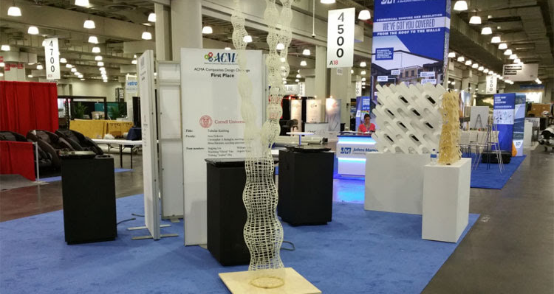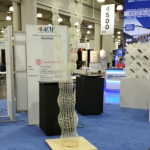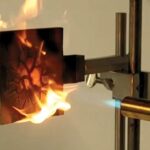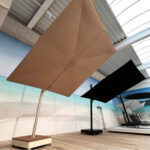ACMA asked students to work in teams to consider the development of a composite architectural/building component or assembly.
This year, a team of students from Cornell University won first place for its “Tubular Knitting” design – a lightweight, spatial and structural tube that can serve as an alternative for a column. The system can be customized, flatpacked and easily assembled onsite. To create the unique design, students Jingjing Liu, William Qian, Xiaohang “Gloria” Yan, Jingxin Yang and Yuheng “Amber” Zhu used automation to knit a fiberglass patterns, which were applied to a series of inflated balloons. After applying resin to the fiberglass, the balloons were deflated, leaving a cured structure with optimal porosity. stretched the limits of what’s possible with composites in architectural design,” said Tom Dobbins, ACMA President & CEO. “The future of architecture is headed toward increased flexibility and lighter weight, and this design epitomizes the type of innovation that will change the industry.”
Second place went to a team of students from The Ohio State University for its “A Tough Tuft” design. Students Chris Block, Jon Decipeda and Rachel Ghindea were inspired by the work of American designer Andrew Kudless, who is known for creating structural walls out of plaster, a hard and heavy material, but makes them appear to be soft and bulbous. Instead of using plaster, the students used the buoyant properties of polyurethane composite foam to create a similar effect.
Third place was awarded to students Karolina Piorko, Veronika Varga and Song Ren from Cornell, who created a lightweight fiberglass dome, entitled “Don’t Leave Me Hangin’,” which uses gravity as a form finding generator. The design explored the properties of catenary structures commonly seen in plants or spiderwebs. To maximize the efficiency and strength of the composite materials, the students created hanging connections of braided fiberglass without a traditional compression element.












